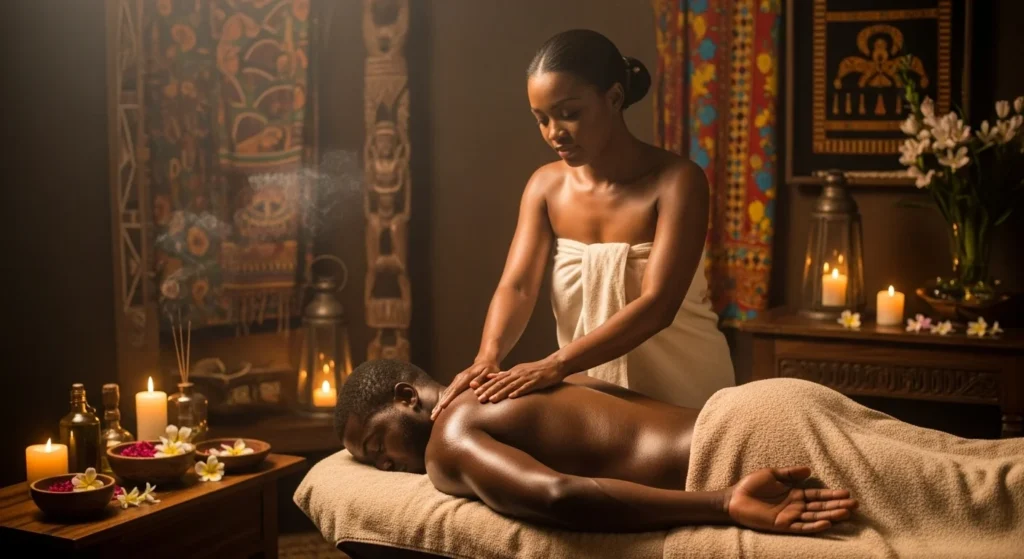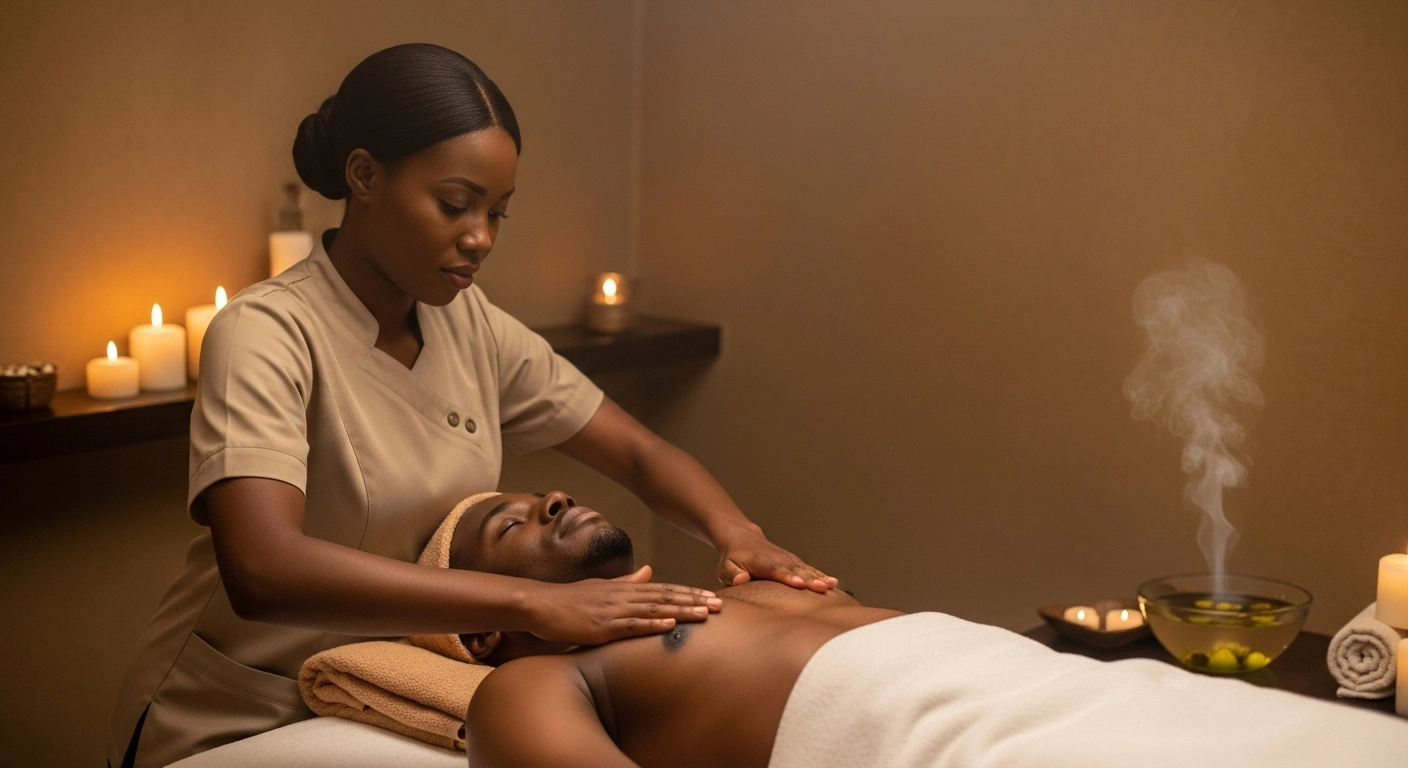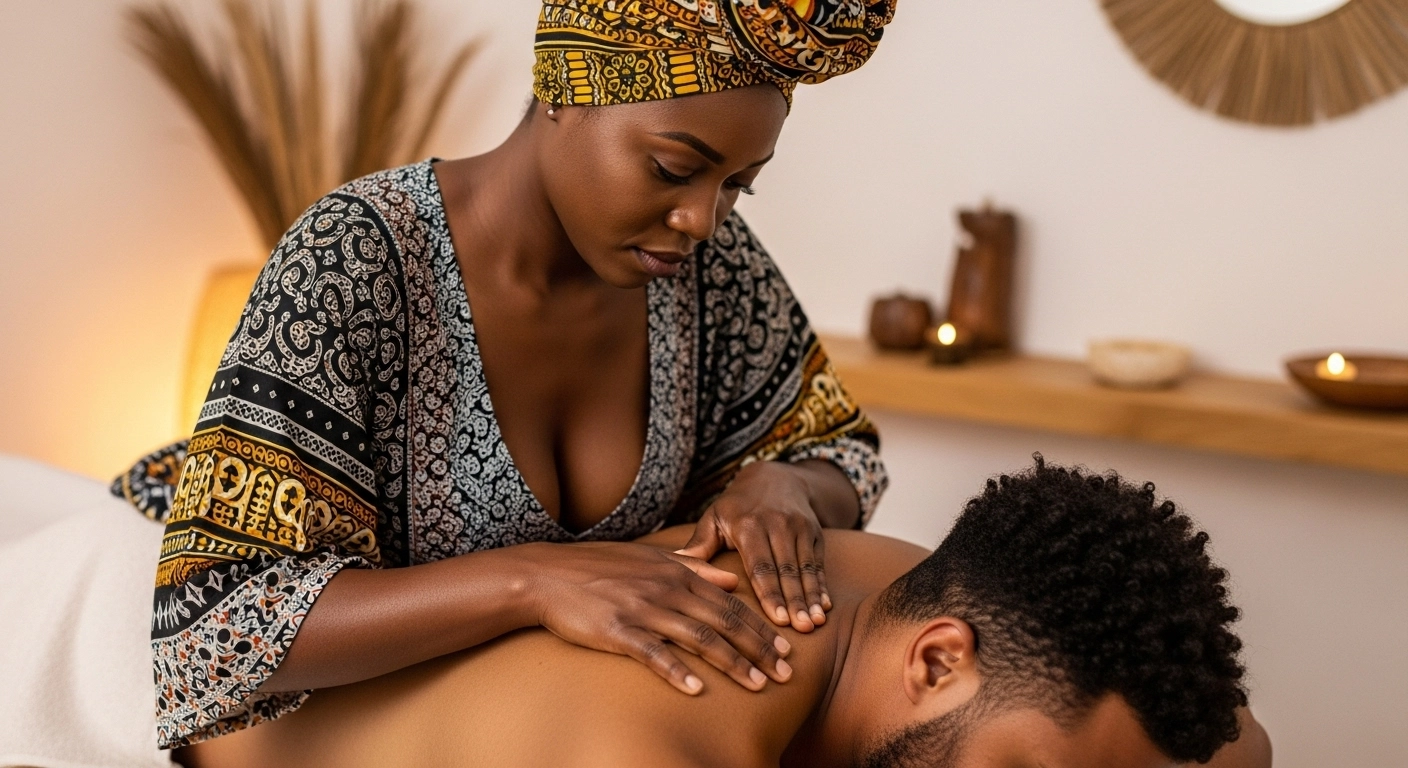Have you ever initiated a massage with your partner only to notice subtle tension in their body that made you question if they were truly comfortable? Maybe you’ve been on the receiving end of touch that felt more like assumption than invitation, leaving you feeling more disconnected than cherished. In our eagerness to create intimacy, we sometimes forget that the deepest connection flourishes only in an atmosphere of complete psychological safety. This uncertainty around boundaries can transform what should be a healing practice into a source of quiet anxiety, where partners hesitate to voice their discomfort for fear of disappointing each other.
What if the most erotic element of massage isn’t a technique, but the profound trust that comes from knowing your boundaries are respected and your “no” will be honored? At Lebien etre, we believe that consent isn’t a barrier to passion—it’s the very foundation that allows true vulnerability and ecstatic surrender to flourish. When both partners feel completely safe to express their desires and limits, massage transforms from a physical act into a deep conversation of mutual respect. We’re here to guide you through creating this culture of consent in your relationship, turning every touch into an invitation rather than an assumption, and building the trust that makes truly transcendent romantic touch therapy possible.
Why Consent Is the Ultimate Aphrodisiac
Consent is often misunderstood as simply getting permission, but it’s actually an ongoing dialogue that creates the safety required for deep relaxation and pleasure. When your nervous system knows it’s safe, it can fully surrender to sensation rather than remaining partially guarded.
This safety allows for deeper physical and emotional release, transforming massage from a superficial rub into a profoundly connecting experience. Consent isn’t about killing the mood—it’s about creating the conditions where both partners can fully let go without reservation. This foundation of respect actually enhances rather than diminishes passion, making it essential for any meaningful erotic massage practice.
The Four Pillars of Enthusiastic Consent
True consent goes beyond mere permission to encompass enthusiastic participation. These four pillars create a framework for ensuring both partners feel respected and excited about intimate touch.
Ongoing: Consent is not a one-time question but a continuous process checked in throughout your time together.
Informed: Both partners understand what’s being proposed and any relevant information about techniques or products being used.
Enthusiastic: The response is an excited “yes!” rather than a reluctant “I guess so” or silent compliance.
Reversible: Either partner can change their mind at any point, for any reason, without explanation or guilt.
Creating a Consent Culture in Your Relationship
Building a consent culture transforms how you approach intimacy every day, not just during massage. These practices make checking in feel natural rather than clinical.
Normalize Small Check-Ins: Make asking “How does this pressure feel?” or “Would you like me to continue?” a regular part of all touch, not just intimate moments.
Establish Non-Verbal Signals: Create hand signals for “softer,” “harder,” “good,” and “stop” that don’t require breaking the mood with conversation.
Schedule Desire Talks: Have regular conversations about boundaries and desires outside the bedroom where there’s no pressure to perform. Our guide on how to talk about desires makes this easier.
Practice Receiving “No” Gracefully: Respond to boundaries with “Thank you for telling me” rather than disappointment, building trust that makes future “yeses” more likely.
The Language of Consent: Phrases That Build Trust
How you frame questions about consent significantly impacts how comfortable your partner feels expressing their true preferences. These phrases invite honest sharing without pressure.
Open-Ended Questions: “Where would you like touch tonight?” instead of “Do you want a massage?” allows for more nuanced responses.
Scale Questions: “On a scale of 1-10, how much pressure would you like?” gives specific feedback without yes/no limitations.
Permission Questions: “Would you like me to use oil?” or “May I kiss you here?” frame touch as invitation rather than assumption.
Appreciation Statements: “Thank you for telling me what feels good” reinforces positive communication and encourages future honesty.
Reading Body Language: The Unspoken Language of Consent
While verbal communication is essential, our bodies often speak truth our words might hesitate to express. Learning to read these signals helps you respond to your partner’s needs more sensitively.
The Breathing Barometer: Deep, relaxed breathing usually indicates enjoyment, while shallow or held breath may signal tension or discomfort.
The Muscle Mirror: Soft, pliable muscles under your touch suggest relaxation, while rigid or tense muscles might indicate unease.
The Movement Response: Leaning into touch suggests pleasure, while pulling away or stiffening suggests discomfort.
The Sound Spectrum: Content sighs or hums typically indicate pleasure, while silence or sharp intakes of breath might suggest surprise or discomfort.
Navigating Consent with Natural Products
When incorporating massage oils and other products, consent involves more than just touch—it includes what you’re putting on your partner’s skin.
Always Patch Test: Before using any new product, apply a small amount to your partner’s inner arm and wait 15 minutes to check for reactions.
Discuss Preferences: Some people love heavy oils while others prefer light lotions or no products at all. Ask “What consistency do you prefer?”
Consider Scents: Scent preferences are highly personal and can trigger memories or reactions. Ask “Do you enjoy this fragrance?” before proceeding.
Respect Allergies: Take any allergies or sensitivities seriously, even if they seem minor to you. Safety always comes before experimentation.
When Consent Shifts: Handling Changing Boundaries
Bodies and moods change, and what felt good one day might not feel good the next. Normalizing this fluctuation prevents frustration and maintains connection.
The 24-Hour Rule: Understand that consent given yesterday doesn’t automatically apply today. Always check in fresh each time.
The Context Matters: Stress, fatigue, hormone cycles, and physical health all affect what touch feels good. Adjust your approach accordingly.
The Mid-Session Check: Periodically pause during longer massage sessions to ask “How are you feeling now?” since needs can change during touch.
The No-Explanation Policy: Accept that “I’m not sure why, but this doesn’t feel right today” is a complete and valid reason to stop or change what you’re doing.
Consent and Vulnerability: The Two-Way Street
The most powerful intimate connections happen when both partners feel safe to be vulnerable. This requires that both people’s boundaries are equally respected.
Reciprocal Check-Ins: The person giving massage should also feel comfortable expressing their needs: “My hands are getting tired—would you mind if we switch positions?”
Shared Vulnerability: When both partners acknowledge their own uncertainties (“I’m still learning this technique”), it creates mutual understanding rather than performance pressure.
Equal Empowerment: Both partners should feel equally empowered to initiate, pause, or redirect intimate touch without worrying about disappointing the other.
Mutual Care: Consent includes caring for the giver’s experience too, ensuring massage doesn’t become one-sided labor but remains mutually enjoyable.
Connecting Consent to Deeper Intimacy
Far from being a mood-killer, practicing conscious consent actually leads to more profound intimacy and connection in all aspects of your relationship.
Builds Trust: Knowing your boundaries will be respected allows for deeper vulnerability in and out of the bedroom.
Enhances Presence: The practice of checking in keeps both partners present and attentive to each other’s experience.
Deepens Communication: Regular consent practice improves overall communication, helping you connect deeper emotionally.
Increases Confidence: When both partners feel safe, they’re more likely to explore new forms of touch and physical intimacy.
Consent Across Different Massage Contexts
How you approach consent may vary depending on the type of massage experience you’re creating, from quick connections to extended sessions.
For Quick-Connection Massage: A simple “Got a minute for a shoulder rub?” respects time boundaries and allows for a quick yes or no.
For Sensual Massage: More detailed check-ins about oil preferences, pressure, and areas of focus ensure comfort with more intimate touch.
For Erotic Touch: Clear communication about intentions and boundaries prevents misunderstandings during more sexually charged touch.
For Rediscovery Sessions: Questions like “How does it feel when I touch here?” help map changing preferences over time.
Healing Through Consensual Touch
For partners who have experienced boundary violations in past relationships or trauma, consensual touch can actually be healing when approached with care and respect.
Go Slower: Proceed at half the pace you think is appropriate, allowing your partner plenty of time to process sensations.
Offer More Control: Let your partner guide your hands rather than you determining the touch, putting them in control of the experience.
Check In Frequently: Simple “How is this?” questions every few minutes provide reassurance and maintain connection.
Celebrate Small Steps: Acknowledging progress (“I appreciate you telling me what feels good”) builds confidence and trust over time.
Your Foundation for Lifetime Intimacy
At Lebien etre, we believe that practicing conscious consent isn’t just about preventing harm—it’s about creating the conditions for the most profound intimacy possible. When both partners feel completely safe, they can explore driving each other wild with desire without fear of crossing boundaries.
Remember that consent is the practice of loving attention—the commitment to truly see, hear, and respect your partner’s experience moment to moment. This practice transforms massage from a technique into a meditation on mutual care and respect. Start with one small check-in today, and watch how this simple practice transforms not just your massage experiences, but your entire relationship.







